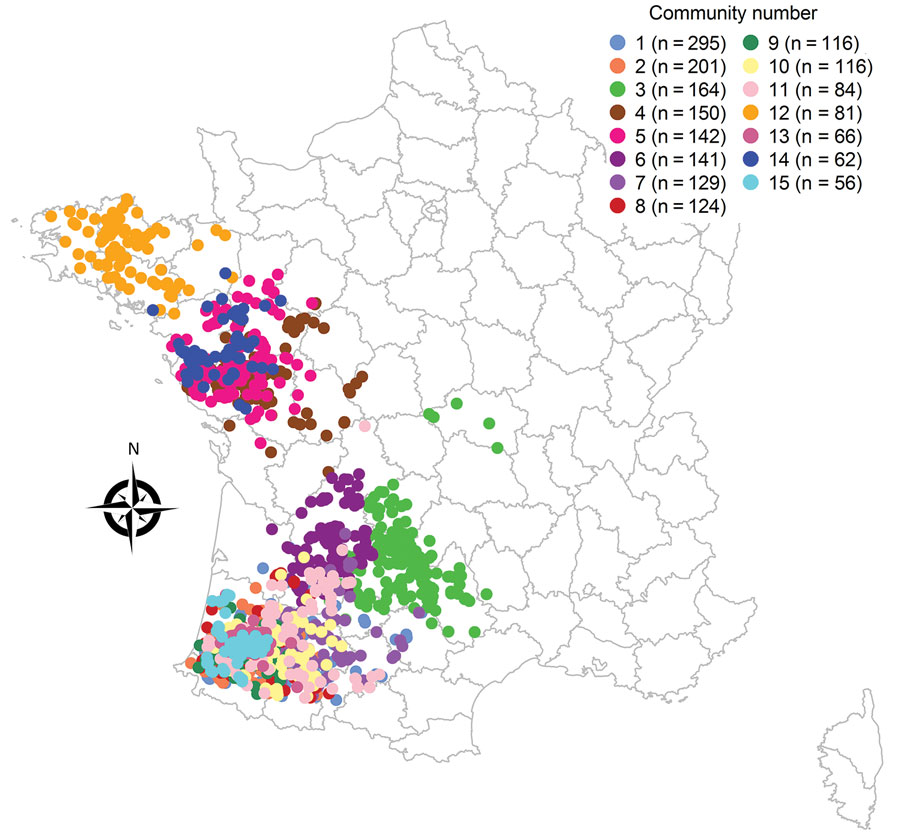Volume 26, Number 3—March 2020
Research
Role of Live-Duck Movement Networks in Transmission of Avian Influenza, France, 2016–2017
Figure 1

Figure 1. Spatial distribution of the 15 largest live-duck trade communities, France, November 1, 2016–March 31, 2017.
Page created: February 19, 2020
Page updated: February 19, 2020
Page reviewed: February 19, 2020
The conclusions, findings, and opinions expressed by authors contributing to this journal do not necessarily reflect the official position of the U.S. Department of Health and Human Services, the Public Health Service, the Centers for Disease Control and Prevention, or the authors' affiliated institutions. Use of trade names is for identification only and does not imply endorsement by any of the groups named above.